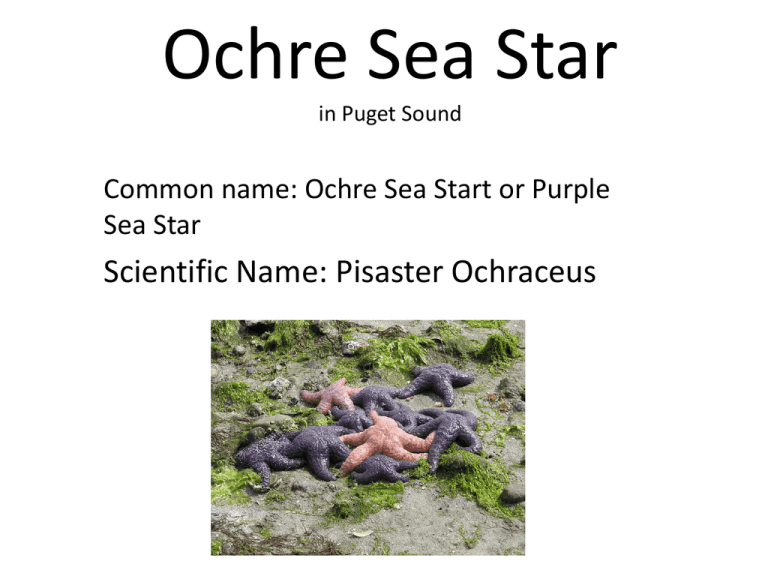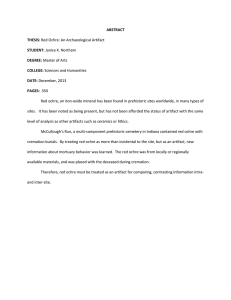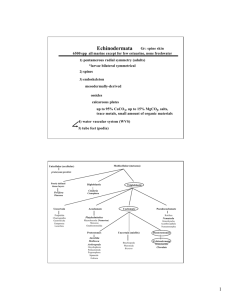Ochre Sea Star
advertisement

Ochre Sea Star in Puget Sound Common name: Ochre Sea Start or Purple Sea Star Scientific Name: Pisaster Ochraceus What the Ochre Sea Start looks like • • • • • The sea star has five stout rays that range in length from 10 to 25 centimeters Most are purple but they can be orange, orange-ochre, and brown The star contains many small spines (ossicles) on the middle part of the creature. The ossicles grow no higher than 2 mm The legs or the tube feet have suckers on their distal ends which allow them to attach to rocks and live in heavily wave-swept areas What the Ochre Sea Star eats mussels sea snails barnacles chitons limpets sea urchins How the Sea Star eats • When an Ochre Sea Star eats, it pries open a tiny crack in a shell fish, then inserts its whole flexible stomach into the shell and slowly digests and sucks out the animal. • The process can take 2 or 3 days. How it produces • • • Does not need a partner to produce Fertilization occurs in the water column The reproductive system consists of a pair of gonads branching into each ray off a circular genital strand which is along the oral inner surface of the central disc Size • Ranges from 15 to 36 cm in diameter • Arms reach up to 10 to 25 cm Habitat • • • • • Can be found in great numbers on mussel beds and on wave-washed rocky shores The juveniles are often found in crevices and under rocks Its depth range is from above the low-tide zone to 90 m in depth They are very durable and can tolerate a loss of thirty-percent of its body weight in body fluids Can find them in locations such as the Puget Sounds and areas in California. Mostly on the east coast Interesting Facts • • • • • Ochre Sea Stars are a favorite food for otters and some sea birds When the tide goes out, their skin and arms become stiff and hard, for protection from predators When the tide comes back in and covers the Sea Stars, their arms become soft and flexible again so they can move around These animals can be exposed to air for up to 50 hours if they are in the shade or among moist algae Many live to a minimal age of four to six years and could live as long as twenty years











